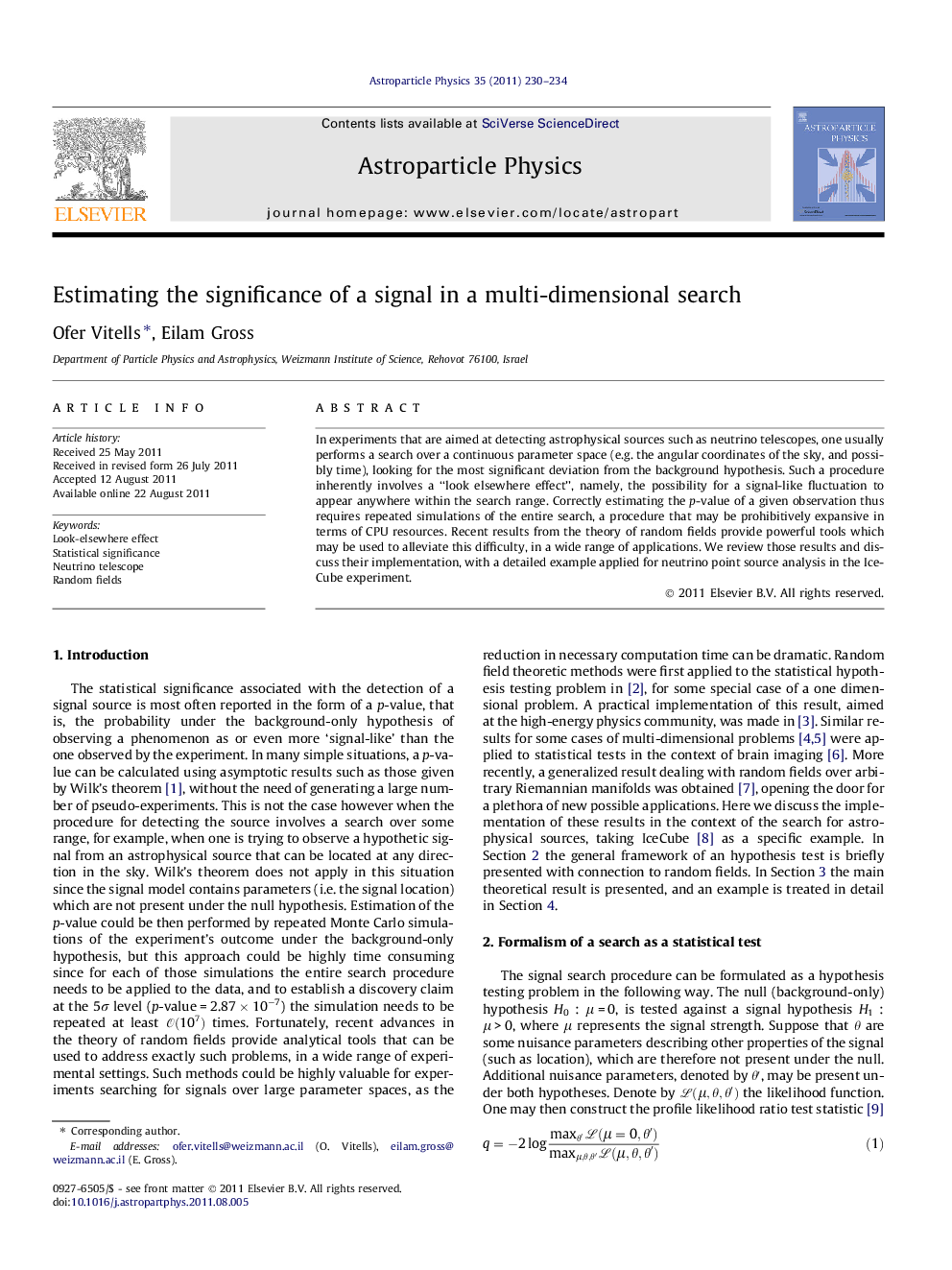| کد مقاله | کد نشریه | سال انتشار | مقاله انگلیسی | نسخه تمام متن |
|---|---|---|---|---|
| 1771058 | 1020722 | 2011 | 5 صفحه PDF | دانلود رایگان |

In experiments that are aimed at detecting astrophysical sources such as neutrino telescopes, one usually performs a search over a continuous parameter space (e.g. the angular coordinates of the sky, and possibly time), looking for the most significant deviation from the background hypothesis. Such a procedure inherently involves a “look elsewhere effect”, namely, the possibility for a signal-like fluctuation to appear anywhere within the search range. Correctly estimating the p-value of a given observation thus requires repeated simulations of the entire search, a procedure that may be prohibitively expansive in terms of CPU resources. Recent results from the theory of random fields provide powerful tools which may be used to alleviate this difficulty, in a wide range of applications. We review those results and discuss their implementation, with a detailed example applied for neutrino point source analysis in the IceCube experiment.
► Data analysis method for estimating statistical significance.
► We apply random field theoretic results for the search for neutrino sources in high energy neutrino telescopes.
► The method reduces the need for CPU-expansive Monte Carlo simulations.
Journal: Astroparticle Physics - Volume 35, Issue 5, December 2011, Pages 230–234